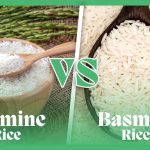Imagine this: You are out for groceries one shiny morning, and your eyes fall on clusters of bright red juicy grapes twinkling under the sunlight. Their vibrant color and smooth skin compel you to purchase a bunch. But did you know that aside from their sweet taste and attractive appearance, red grapes are nutritional wonders of nature?
These little gems are antioxidant powerhouses that shield your precious body from loads of diseases. So, if you are a fan of red grapes, get ready to fall in love with them after immersing in this article!
What are red grapes?
Red grapes are a type of fruit that belongs to a group of Vitis vinifera species. One of the most multifaceted foods, red grapes can be eaten as is or converted into wine, resins, and jellies for an extra boost of taste.
They come in several varieties that differ in size, flavor, and texture. Some of the most common varieties of sweet red grapes are Flame seedless, Crimson seedless, Red globe, and Concord. Known for their antioxidant properties, red grapes contain an abundance of vitamin C, potassium, calcium, iron, magnesium, and many other essential nutrients that offer a wide range of health advantages.

Nutrient composition:
According to USDA, 100 grams of seedless red grapes incorporate 86 calories of energy, 0.91 grams of protein, and 0.16 grams of fats. These delicious and sweet fruits provide 20.2 grams of fats with a total sugar of 17.3 grams.
Coming towards micronutrients, red grapes are a reservoir of essential minerals and vitamins providing calcium, iron, magnesium, potassium, zinc, sodium, copper, and vitamin C.
| Nutrients (100g) | Amount |
|---|---|
| Proximate composition | |
| Water | 78.2 g |
| Energy | 86 kcal |
| Protein | 0.91 g |
| Total fats | 0.16 g |
| Carbohydrates | 20.2 g |
| Total sugars | 17.3 g |
| Minerals | |
| Calcium | 10 mg |
| Iron | 0.16 mg |
| Magnesium | 8.6 mg |
| Phosphorus | 25 mg |
| Potassium | 229 mg |
| Sodium | 7 mg |
| Zinc | 0.04 mg |
| Copper | 0.081 mg |
| Manganese | 0.098 mg |
| Vitamins | |
| Vitamin C | 3.3 mg |
| Biotin | 3.7 µg |
Role in human nutrition:
Red grapes offer a wide range of health benefits essential for sustained health effects and improving the overall vitality of the body. Let us discuss the prominent roles of these tiny spherical fruits in human nutrition in detail:
Cardiovascular health:
Grapes are home to essential polyphenols that help reduce the risk of cardiovascular diseases alongside other chronic diseases. Grapes contain flavonoids, resveratrol, and anthocyanins that promote cardiovascular health by reducing the risk of blood clot formation, lowering blood pressure, and improving the function of the endothelium. Potassium in red grapes helps in cardiovascular health by lowering high blood pressure.
Lastly, polyphenols also improve cardiovascular health by reducing triglycerides, total cholesterol, and LDL levels (1).
Antioxidant activity:
The polyphenols in red grapes particularly flavonoids, resveratrol, and quercetin have antioxidant potential that neutralize the free radicals and reduce the risk of prominent chronic diseases.
Oxidative stress is highly associated with diabetes, cancer, and heart disease. The highest antioxidants in grapes are in the seeds and skin of the fruits. These antioxidants can reduce oxidative stress by scavenging free radicals that lead to inflammation. Quercetin particularly is the one responsible for having anti-inflammatory and anti-viral properties. Vitamin C is also a powerful antioxidant and red grapes have tons of it which also serve their antioxidant potential.
Cancer prevention:
The mighty polyphenols in red grapes are the heroes of today that extend their role in preventing the formation of cancer cells in the body as well. Resveratrol acts as an antioxidant by reducing inflammation and ceasing the formation of cancer cells. Moreover, quercetin, anthocyanins, and catechins also offer anti-cancer effects to the human body.
In-vitro and in-vivo studies exhibit the beneficial effects of resveratrol on the cancers of breast, prostate, liver, colon, intestine, skin, lung, thyroid, and blood cancer (2).
Diabetes prevention:
The glycemic index is the rate at which the carbohydrates are converted into glucose, 45 for red grapes. The GI of fewer than 55 is termed as low and is suitable for consumption for people with diabetes. As per the GI, red grapes tend to lower blood glucose slowly and don’t cause a sudden spike.
Furthermore, 100 grams of red grapes provide only 20 grams of carbohydrates, which means they are suitable for people who wish to keep their glucose level under control.
Skin health:
The abundance of vitamin C in red grapes may improve skin health by protecting it from pollution, damage from toxins, and preventing sun damage.
Eye health:
In addition to other benefits, red grapes offer their role in eye health and preventing eye-related diseases. Red grapes improve eye health by reducing the aging of the human retina and preventing age-related macular degeneration. The resveratrol and quercetin in the grapes also promote eye health by reducing abnormal eye vessel growth and ocular inflammation (3).
Memory health:
Red grapes improve boosts brain health and improve memory. Consuming red grapes and red grapes juice not only improves mood but also boosts brain health by improving memory, attention, and learning.
A decline in cognitive and motor function is normal as age increases. Age is one of the main risk factors for certain neurological disorders including Alzheimer’s disease. The superhero resveratrol is the one responsible for improving brain function, reducing brain inflammation, and protecting against Alzheimer’s disease.
Bone health:
Red grapes are home to all essential minerals responsible for keeping bones and teeth healthy and strong. Calcium, the core mineral for bones is in ample amounts in red grapes along with phosphorus and magnesium. These minerals not only keep the bones healthy by prevent the body from developing osteoporosis and bone issues. Furthermore, resveratrol is also known to be improving bone density.
Antibacterial effects:
The antioxidants readily found in red grapes may protect the body against harmful pathogens. Resveratrol in grapes prevents the growth of E.coli and protects against food-borne illnesses upon their addition to food.
Anthocyanins present in red grapes may also have antibacterial effects by destroying the cell walls of bacteria. Furthermore, Vitamin C in red grapes is widely known for its role in boosting the immune system.
Stroke prevention:
Ischemic stroke is the leading cause of disability and the second leading cause of death in the Western world. It occurs upon the stoppage of the regular blood supply to the brain mainly due to a blood clot, thereby depriving the body of the normal oxygen supply. Red grapes and their products are believed to prevent this major disease as apparent from animal studies (4).
Better sleep:
The presence of small amounts of melatonin in red grapes may help promote healthy and sound sleep. Melatonin is a hormone produced in the brain that helps promote long and restful sleep and is usually produced after it gets dark outside.
Side effects of grapes:
Do red grapes cause adverse effects? Let’s find out.
Although rare, consuming grapes may cause allergic reactions in some people. So if you experience symptoms related to allergy after consuming them, consult your doctor right away.
Consuming large quantities of red grapes in one sitting may cause diarrhea, dry mouth, dry mouth, and headache.
Red gapes vs. other grapes:
All types of grapes including green, black, and red grapes provide a variety of nutrients and health benefits and are known to be extremely nutritious. But does one of them have a slight upper hand?
Green grapes are good sources of vitamin C, vitamin K, and potassium, while black grapes are rich in vitamin C, vitamin K, vitamin B6, potassium, and calcium. But what sets red gapes apart from other grape types is its composition of resveratrol.
Resveratrol, as discussed earlier, is the superhero of the red grapes. It is a polyphenol that acts as an antioxidant and provides benefits ranging from heart health to anti-inflammation.

How to incorporate it into our diet?
Red grapes can be incorporated into your diet in a variety of methods.
- Consume them plain
- Frozen red grapes in summer can be refreshing along with being healthy
- Toss them in any fruit salad
- Add them to green salad for a tinge of sweetness and a burst of health
- Pair them with mild cheeses like Edam or gouda
- Toss them in your breakfast smoothie
To summarise it all, red grapes stand as the antioxidant powerhouse hiding a plethora of health benefits despite their miniature sizes. Oozing with all vital nutrients including vitamins and minerals, they do not only satisfy our taste buds as a snack but also prevent against all chronic diseases. Incorporating these bite-sized fruits into your diet may begin transforming your life in improving your overall well-being.
References:
- https://doi.org/10.1002/jsfa.6890
- https://doi.org/10.1080/10408398.2012.692408
- https://doi.org/10.1007/978-3-319-28995-3_11
- https://doi.org/10.1007/978-3-319-28995-3_8









